Whether you’re looking to grow a bountiful vegetable patch or an array of vibrant flowers, June offers a unique canvas for your gardening aspirations. Below, we’ll explore a selection of plants ideal for sowing this month, providing insights into their specific needs, benefits, and how they can enrich your garden.
Tomato (Solanum lycopersicum)
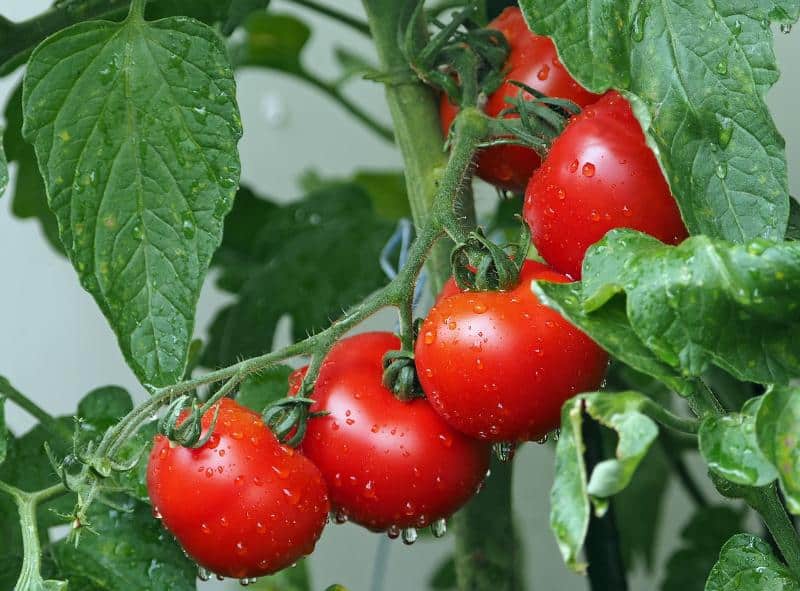
Tomatoes are a beloved staple in many gardens, and June is the perfect month to plant them if you haven’t already. These sun-loving plants thrive in warm temperatures and require full sun, making them ideal for the summer months. When planting, choose a location with well-draining soil and consider starting with young seedlings to ensure a productive harvest.
For best results, support your tomato plants with stakes or cages as they grow. Regular watering is crucial, particularly as fruits begin to set. You can also enhance flavor by practicing techniques like pruning and managing foliage to allow for better air circulation. And if you’re feeling adventurous, explore heirloom varieties that offer unique flavors and colors, enriching both your garden’s biodiversity and your culinary experiences.
Corn (Zea mays)
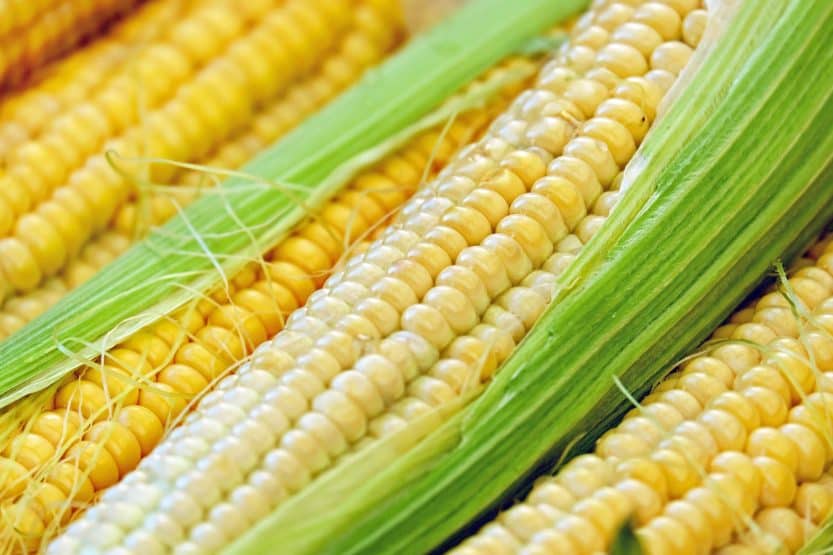
Corn is another summer favorite that thrives in the warm soil of June. This tall grass is not only a staple food crop but also becomes a stunning feature in your vegetable garden with its towering stalks. Corn requires well-drained soil and a lot of sunlight, generally requiring at least six to eight hours daily.
When planting, space your seeds about 12 inches apart to allow for adequate air circulation and growth. Corn plants are wind-pollinated, so it’s beneficial to plant them in blocks rather than single rows to improve pollination rates. Try growing different varieties for a colorful corn harvest, from sweet corn to ornamental types that will add flair to your garden.
Pumpkin (Cucurbita sp.)
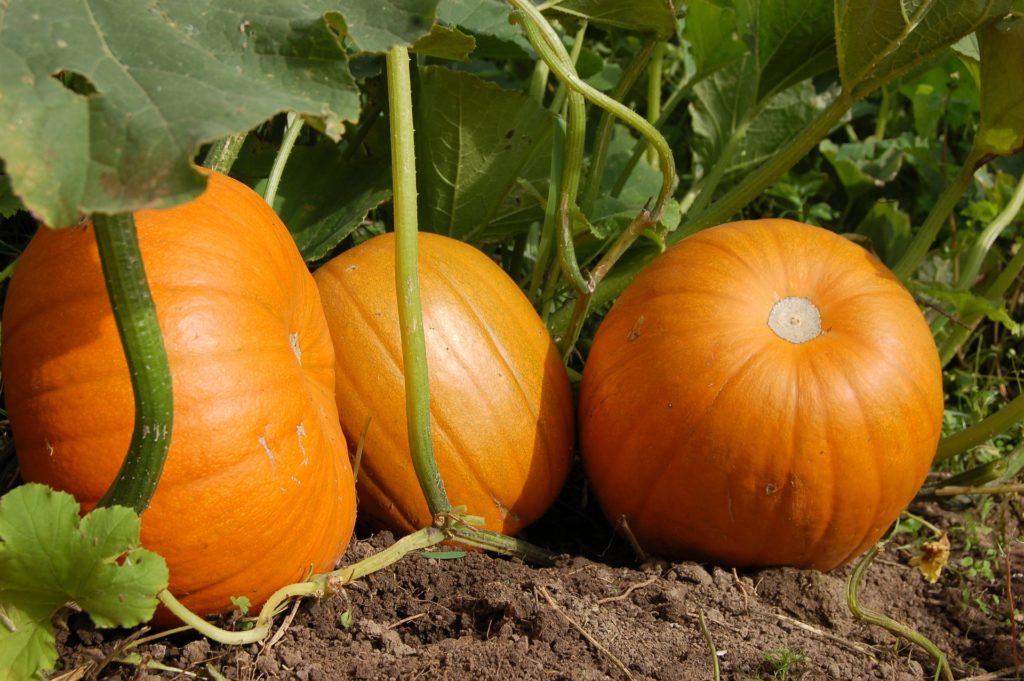
Pumpkins are not just for Halloween; they’re fun to plant in June and have a relatively quick growing cycle. These gourds thrive in rich, well-draining soil and love the warm temperatures of summer. When planting, you can sow seeds directly into the garden bed after the last frost, making sure to leave enough space between plants as they spread out.
To maximize growth, ensure your pumpkins receive plenty of sunshine and regular watering. If you’re aiming for giant pumpkins, consider providing them with added nutrients through compost and fertilizers. Pumpkin vines also produce beautiful flowers that can attract beneficial pollinators, making them a dual-purpose plant in your garden.
Zinnia (Zinnia elegans)
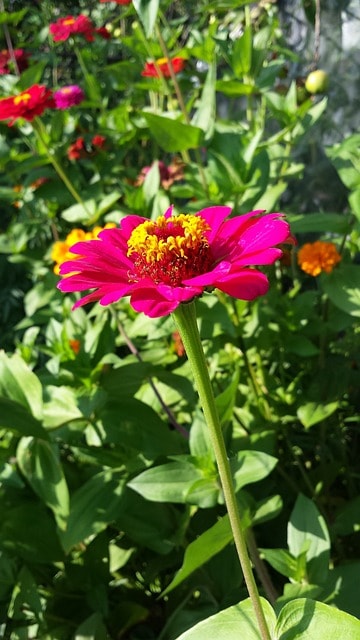
Zinnias are the epitome of summer flowers, offering vibrant colors and easy maintenance. Planting zinnias in June ensures that they bloom profusely throughout the summer into early fall. These flowers thrive in full sun and prefer well-drained soil, making them an excellent choice for garden beds or containers.
You can plant zinnias directly from seeds or purchase young plants from a nursery. They attract butterflies and beneficial insects to your garden, creating a lively ecosystem. To encourage bushy growth, pinch back the tips of young plants. With so many varieties available, you can create a colorful tapestry that brings joy to any garden space.
Rosemary (Rosmarinus officinalis)
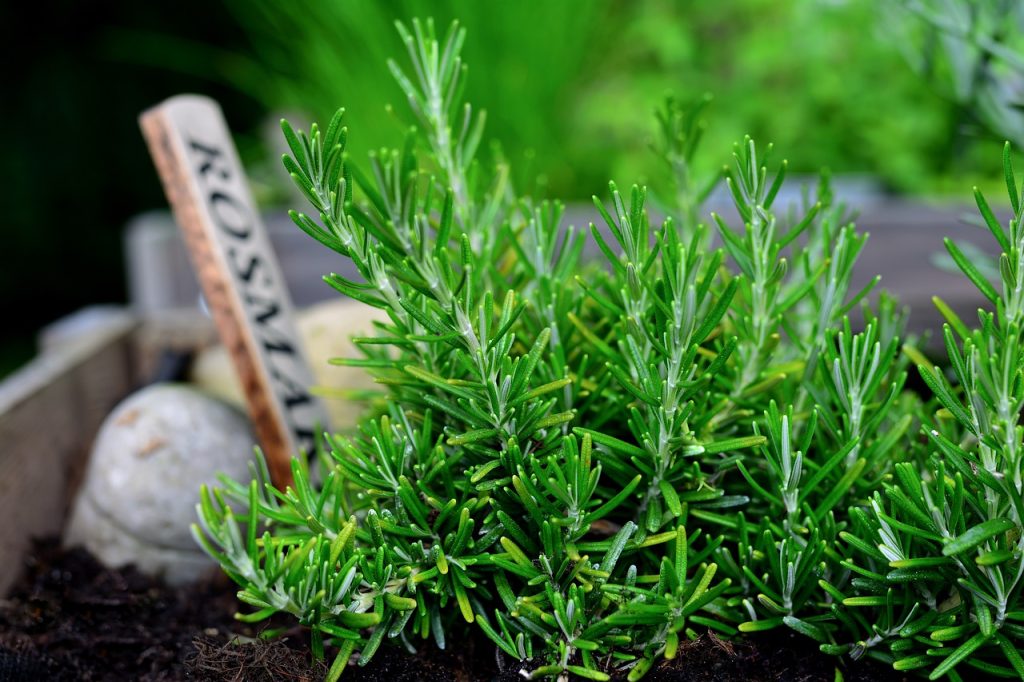
Herbs like rosemary thrive in the warm, sunny days of June. This aromatic perennial loves full sun and well-draining soil, making it a rewarding addition to any garden. Rosemary can be grown from seeds, cuttings, or seedlings, but starting with young plants can help you get a quicker yield.
Unlike many plants, rosemary requires less frequent watering once established, as it prefers drier soil conditions. It’s perfect for culinary use and can enhance your dishes with its robust flavor. Additionally, rosemary is known for attracting pollinators, making it not only beneficial for cooking but also a great plant for enhancing biodiversity in your garden.
Cilantro (Coriandrum sativum)
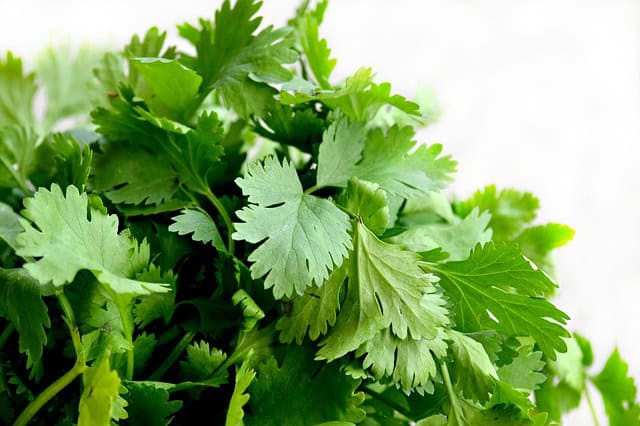
Cilantro, or coriander as it’s known in its seed form, is a fantastic herb to plant in June. While it prefers cooler temperatures, it can still thrive in the warmth of early summer, particularly if you provide some shade during the hottest parts of the day. This herb grows quickly and can be harvested multiple times, making it a wonderful investment for your kitchen.
Sow cilantro seeds directly into the ground, spacing them about 6 inches apart. Regular watering will keep the soil moist and encourage leafy growth. Remember, once the weather gets too hot, cilantro may bolt to seed quickly, so plan to use it frequently while it’s thriving. Its fresh flavor is perfect for salsas, salads, and a myriad of culinary delights.
Peppers (Capsicum sp.)
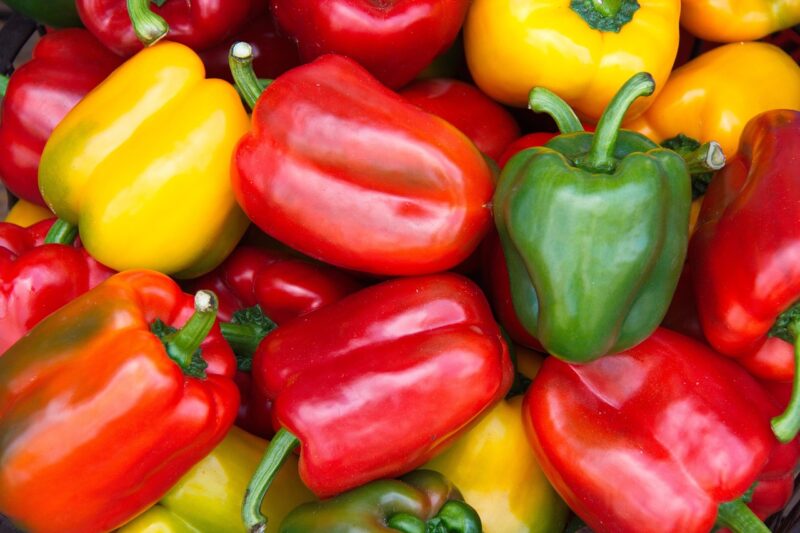
June is a prime time for planting a variety of pepper plants, from sweet bell peppers to hot chili varieties. These sun-loving plants need well-drained soil and plenty of sunlight, ideally around 6 to 8 hours each day. When planting, it’s wise to start with youngsters, as they can establish themselves more easily in the garden.
Peppers enjoy warmth, so be mindful of nighttime temperatures; they thrive when the nights are consistently warm, as this encourages fruit development. Fertilize your plants regularly to provide essential nutrients, and consider mulching around the base to retain moisture. With such an array of peppers available, you can grow a colorful mix to use in cooking, preserving, or simply snacking.
Zucchini (Cucurbita pepo subsp. pepo Zucchini)
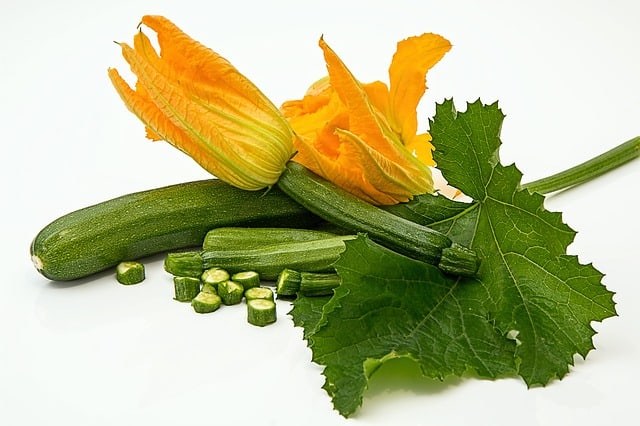
Zucchini is a staple summer vegetable that is not only easy to grow but also incredibly productive. Planting zucchini in June means you’ll have a delectable harvest just in time for summer barbecues and family gatherings. These plants need plenty of sun and fertile, well-draining soil.
Sow seeds directly into your garden, leaving adequate space for the plants to spread out. Regular watering, especially during fruit development, is key to ensuring tender and juicy zucchini. This vegetable is versatile in the kitchen, lending itself beautifully to everything from stir-fries to baked goods. If you’re feeling particularly adventurous, try planting different types of squash to diversify your garden and palate.
Lavender (Lavendula sp.)
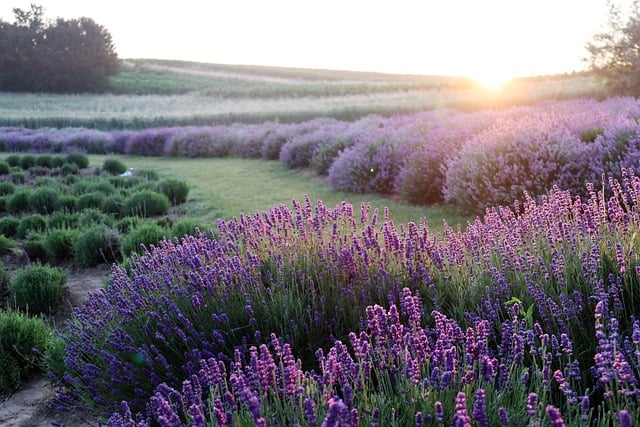
June is a perfect time to plant lavender, a beautiful and fragrant addition to any garden. This perennial herb loves full sun and well-drained soil, making it perfect for bright spots in your garden. Lavender is drought-tolerant once established, so it’s excellent for lower-maintenance landscaping.
When planting lavender, be sure to allow enough space for airflow around the plants, which helps prevent pests and disease. The aromatic flowers will not only enhance your garden’s aesthetics but also attract beneficial pollinators like bees and butterflies. Plus, lavender can be harvested for use in potpourris, sachets, and culinary dishes, providing multiple benefits.
Cup and Saucer Vine (Cobaea scandens)

The cup and saucer vine is a striking climbing plant that flourishes in June’s heat. Known for its unique cup-shaped flowers, this vine is perfect for trellises, fences, or arbors, offering an eye-catching display. It thrives in full sun and well-drained soil, making it easy to care for in summer months.
When planting, allow enough space for the vine to climb, and ensure that it has adequate support. Regular watering will encourage vigorous growth and floriferous display. This vine not only adds beauty to your garden but also creates habitats for birds and insects, contributing to the overall biodiversity of the area.
Green Beans (Phaseolus vulgaris)
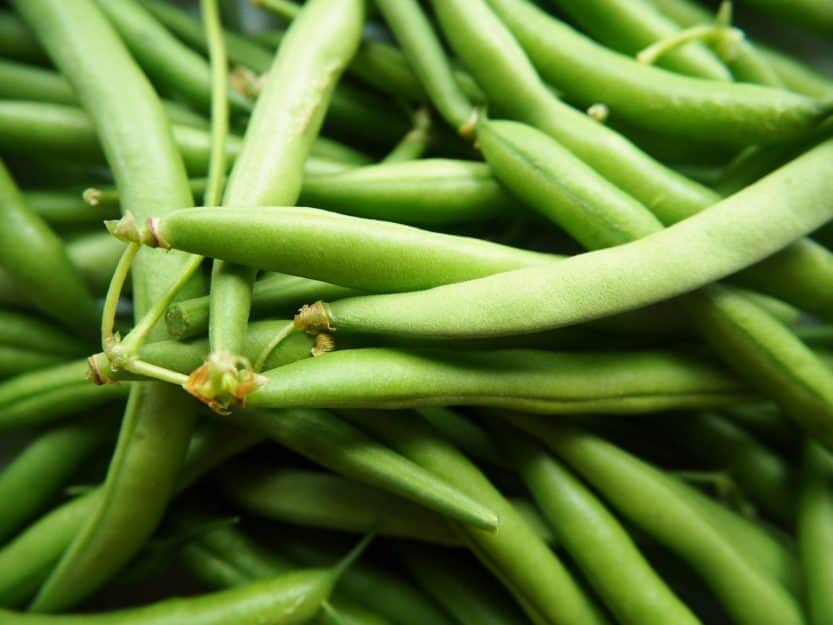
Green beans are a quintessential summer crop that can be planted directly in the garden in June. These vigorous plants are perfect for home gardeners as they require minimal maintenance and produce bountiful yields. They prefer moist, well-drained soil and thrive in full sunlight.
Sow seeds about an inch deep and space them correctly according to the variety—bush beans need less room than pole beans, which require trellis support. Green beans grow quickly, allowing for multiple harvests throughout the season. They are delicious fresh and versatile in the kitchen, making them a fantastic addition to your garden.
Carrot (Daucus carota subsp. sativus)
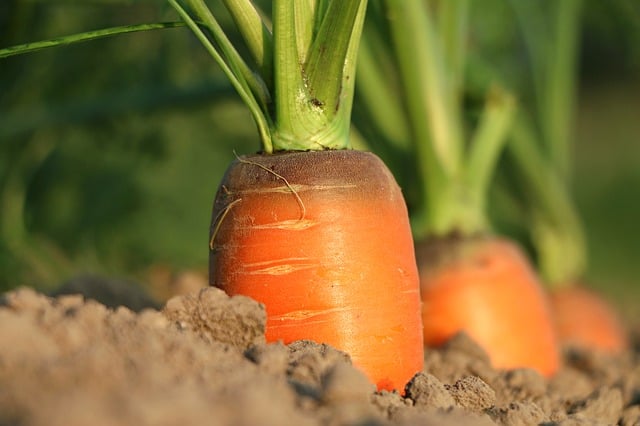
June is a great time to plant carrots, as the warm soil encourages quick germination. While they enjoy cooler temperatures, sowing carrots can be successful in early summer as long as the soil remains moist. Carrots prefer loose, well-drained soil, making it essential to prepare your garden bed accordingly.
Plant seeds directly in the ground, spaced about 2 inches apart. Thin seedlings as they grow to allow for ample root development. With proper care, you will be rewarded with sweet and crunchy carrots, perfect for salads, soups, and roasting. Plus, they’re a great crop to teach children about gardening, as the excitement of pulling them from the ground is always a delight.
Watermelon (Citrullus lanatus)
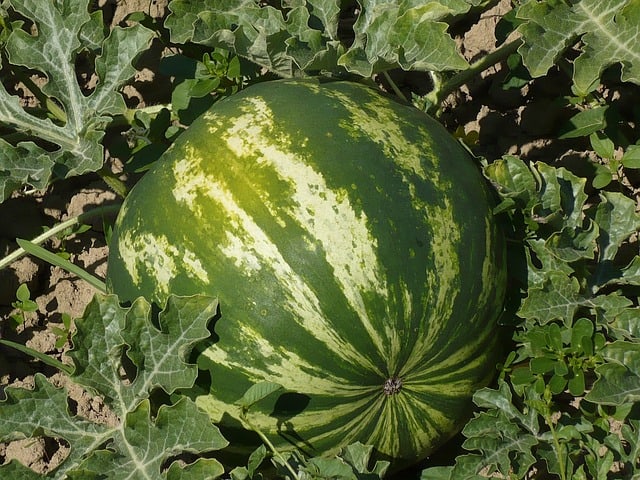
Nothing says summer quite like a juicy watermelon! June marks the beginning of the growing season for this delicious fruit. Watermelons thrive in full sun and well-drained soil, making them perfect for warm weather planting. They require ample space to spread, so consider planting them in a dedicated area of your garden.
Sow seeds directly into the ground, ensuring they are spaced out well to allow for their sprawling vines. Consistent watering is essential, especially as melons begin to form, to promote sweet and juicy fruits. Watermelon can be a fun crop to grow, and the fruits are perfect for summer picnics and barbecues, offering a refreshing treat on a hot day.
Basil (Ocimum basilicum)

Basil is a quintessential herb for summer gardens, and June is a great time to plant it. This fragrant herb thrives in warm weather and full sunlight, making it a delightful addition to any garden bed or container. Basil can be grown from seeds or young plants and enjoys well-drained, fertile soil.
Regular harvesting will encourage bushy growth and more flavorful leaves. Basil pairs wonderfully with tomatoes and is a must-have for any Italian dish, enhancing flavors and aromas. Moreover, it attracts beneficial insects to your garden, further enriching your gardening experience.
Marigolds (Tagetes sp.)
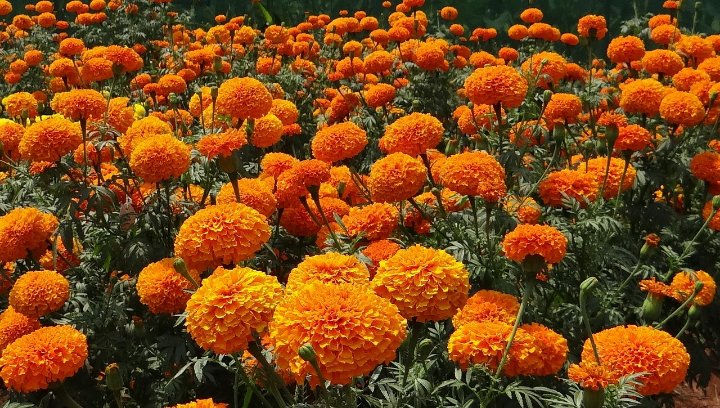
Marigolds are not just beautiful; they are also beneficial to your garden, making them an excellent choice for planting in June. These vibrant flowers thrive in warm temperatures and can tolerate a variety of soil conditions as long as they have good drainage. Planting marigolds can deter pests, acting as a natural repellent for harmful insects.
You can plant marigolds in flower beds, containers, or vegetable gardens, providing pops of color throughout the growing season. Regular deadheading will encourage more blooms, extending their flowering period. From bright orange to rich yellow hues, marigolds can liven up any space and bring joy to your gardening efforts.
Sage (Salvia officinalis)
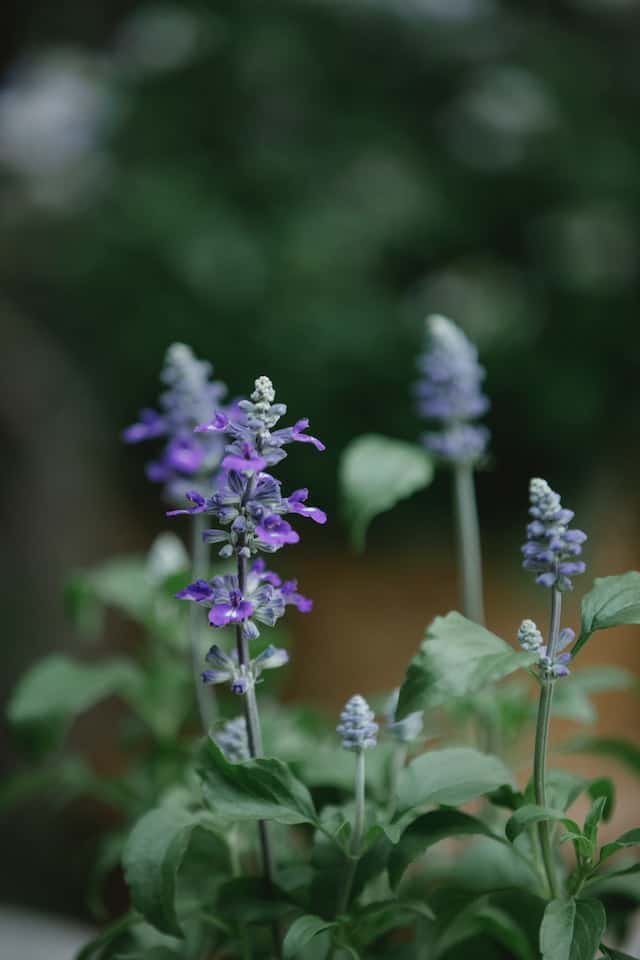
Sage is another wonderful herb to plant in June, thriving in the summer heat. This hardy perennial prefers well-drained soil and full sun, making it an ideal choice for herb gardens. Sage is relatively drought-tolerant once established, which saves time and resources.
When planting, give sage plenty of room to grow, as it can spread over time. Its aromatic leaves are perfect for culinary use, adding depth to meats and stews. Besides its culinary benefits, sage attracts pollinators to your garden, fostering a vibrant ecosystem.
Astilbe (Astilbe sp.)

Astilbe is a stunning perennial that does well in partial shade, making it a great choice for areas of your garden that don’t receive full sun. June is an excellent time to plant these colorful flowering plants, which produce feathery plumes in various shades, including pink, white, and red.
Prep the soil well, aiming for rich, organic matter to ensure healthy growth. Regular watering is essential, especially during dry spells, as astilbe loves moisture. Planting these beauties adds texture and interest to your shade garden, creating a serene atmosphere.
Petunia (Petunia x hybrida)
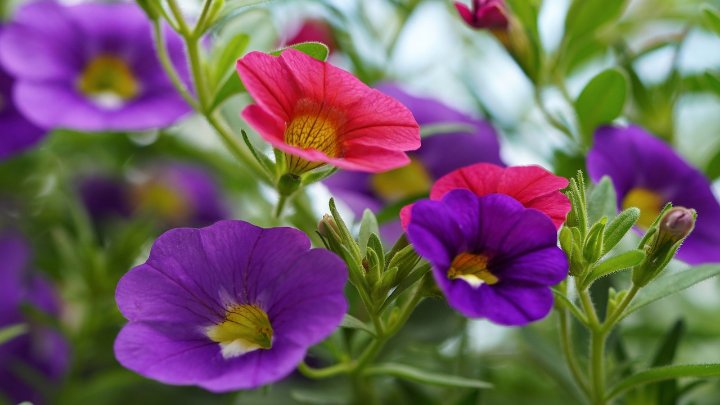
Petunias are vibrant flowers that thrive in the warmth of June, offering a stunning array of colors and patterns. They prefer full sun and well-draining soil, making them perfect for hanging baskets, containers, or flower beds. Planting petunias at this time will ensure a long blooming period through the summer.
When caring for petunias, regular deadheading helps encourage continuous blooms. They can also withstand heat and drought, making them an excellent choice for a low-maintenance garden. With countless varieties available, you can create charming displays or complement other annuals and perennials for a breathtaking visual feast.
Sweet Potato Vine (Ipomoea x batatas)

Sweet potato vines are not only attractive but also serve a nutritional purpose, making them a versatile addition to your garden. This plant loves warmth and sunshine, thriving in the summer months. The decorative foliage comes in various colors, adding visual interest to any garden space.
When planting sweet potato vines, choose a location with rich, well-draining soil. Though they require space to spread, they can be trained to climb if you have trellises or arbors. Not only can you enjoy their beauty, but you can also harvest sweet potatoes later in the season, adding a delicious and nutritious element to your meals.
Flowers To Plant in June
Gaillardia (Gaillardia spp.)
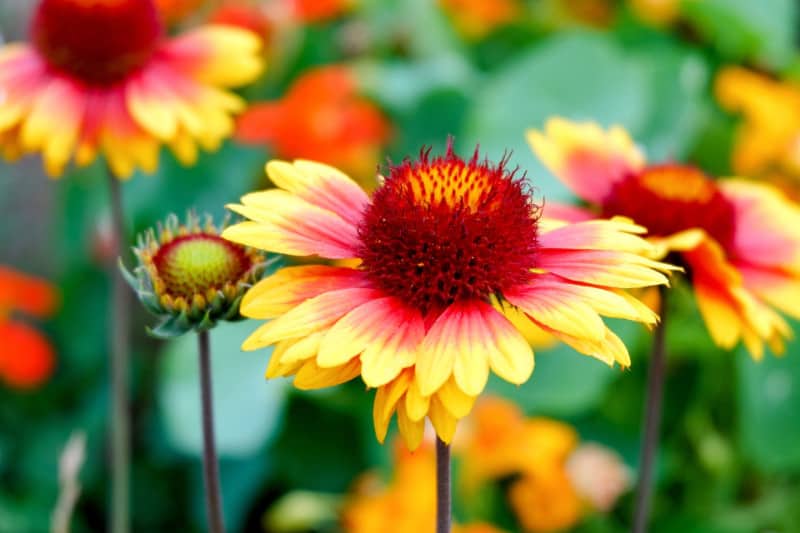
Gaillardia, also known as blanket flower, is a vibrant perennial that shines in sunny gardens. With their striking red, orange, and yellow bicolored blooms, gaillardia adds a cheerful touch to borders and flower beds. They thrive in well-drained soil and full sun, making them easy to care for.
Plant gaillardia in groups for a bold display, and expect rewarding blooms from mid-summer until frost. These flowers are drought-tolerant and require minimal maintenance, making them a favorite choice for low-maintenance gardens. Additionally, they attract bees and butterflies, supporting your garden’s ecosystem.
Butterfly Milkweed (Asclepias tuberosa)

As the name suggests, butterfly milkweed is a magnet for pollinators, particularly the iconic monarch butterfly. This native perennial produces clusters of bright orange flowers that stand out beautifully against green foliage. Butterfly milkweed prefers well-drained soil and full sun, making it an ideal addition to sunny garden beds and meadows.
Plant in June to ensure strong growth, and watch as the butterflies flock to this favorite nectar source. Beyond their pollinator-friendly qualities, butterfly milkweed has a deep taproot that improves soil health and stability. As an added bonus, the plant requires little water once established.
Pentas (Pentas lanceolata)

If you’re looking to attract butterflies and hummingbirds, pentas are an excellent choice. With their star-shaped blooms in colors ranging from red to white and purple, pentas provide stunning color throughout the summer. These annuals thrive in full sun and well-drained soil, making them perfect for containers and garden beds alike.
Plant pentas in well-mulched areas to retain moisture, and deadhead regularly to promote continued blooming. They are also heat-tolerant and will flourish even in the hot summer sun, providing a continuous source of nectar for pollinators.
Daylily (Hemerocallis spp.)
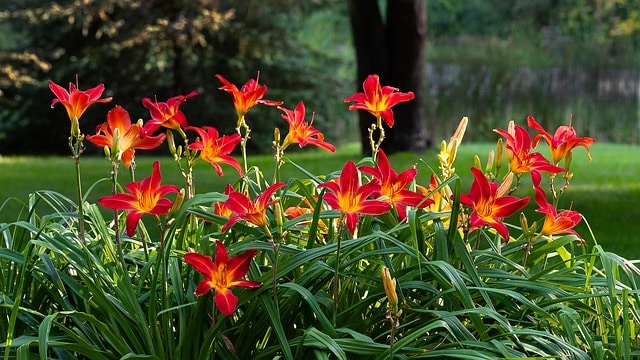
Daylilies are one of the most resilient and versatile perennial flowers you can plant in June. Known for their wide range of colors and fragrances, daylilies provide a spectacular display throughout summer. These flowers thrive in full sun to partial shade and can adapt to a variety of soil types.
When planting daylilies, space them adequately to allow for their sprawling growth habit. They are relatively low-maintenance, requiring minimal watering once established. Each bloom lasts only a day, but with so many flowers on each plant, you’ll have a continuous show of color for weeks.
Begonia (Begonia spp.)
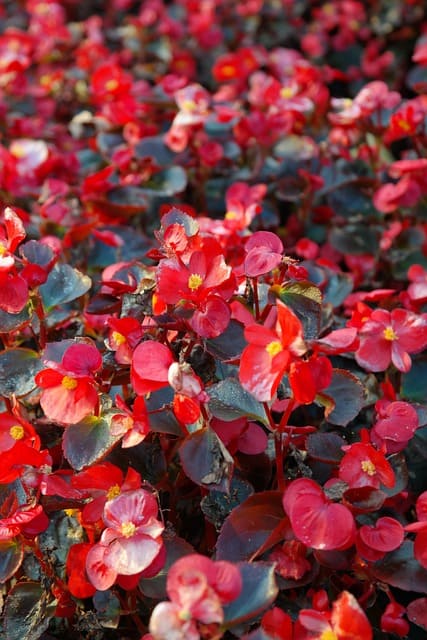
Begonias are a wonderful option for shady areas in your garden, bringing splashes of color to darker spots. With thick, waxy leaves and an array of flower colors, begonias provide versatility in various garden styles. They thrive in well-drained, rich soil and partial to full shade, making them perfect for containers, hanging baskets, and shaded garden beds.
When planting begonias in June, ensure they receive adequate moisture but avoid overwatering. Regular deadheading will enhance blooming, creating a lush floral display throughout the season. Their lush foliage and colorful flowers can transform any space into an inviting retreat.
Sea Holly (Eryngium spp.)
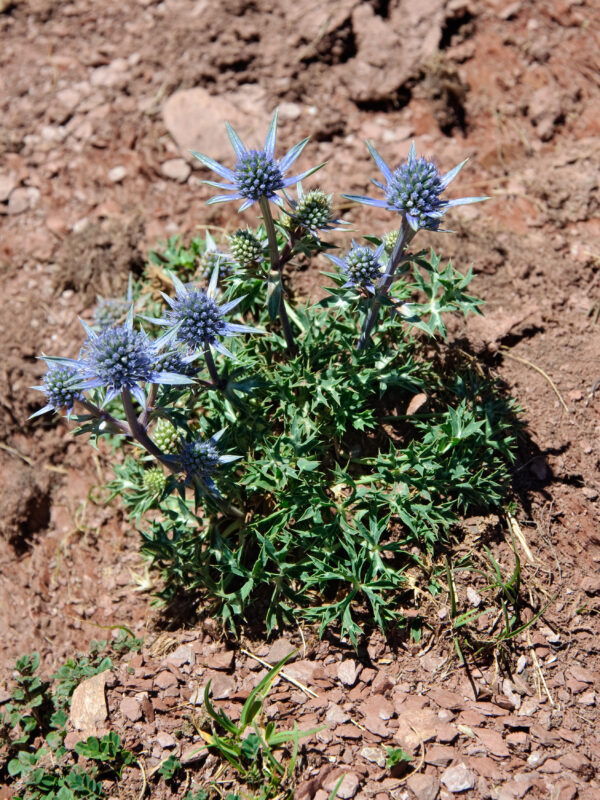
For a unique addition to your garden, consider sea holly, known for its spiky blue flowers and silvery-gray foliage. This perennial thrives in well-draining soil and full sun, offering a modern touch to both traditional and contemporary gardens. Sea holly is drought-tolerant, making it a great choice for low-water gardens.
Plant in June to allow the striking blue flowers to develop during the summer months. Sea holly not only provides visual interest but also attracts pollinators, making it a valuable component of your garden ecosystem.
Verbena (Verbena spp.)
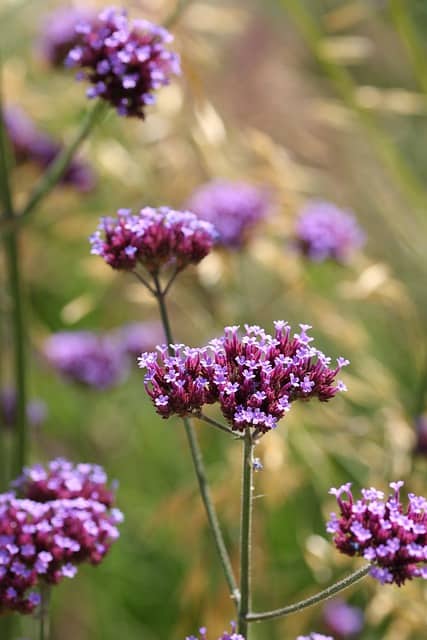
Verbena is a hardy annual flower that blooms profusely from spring to frost, making it a popular choice for gardeners looking for reliable color. With a range of hues from purple to pink and even white, verbena flourishes in full sun and well-drained soil, perfect for hanging baskets, containers, or as a ground cover.
Deadheading spent blooms encourages continual flowering. Verbena is also heat-tolerant and loves summer sun, making it an ideal choice for brightening up your garden. Plus, these flowers attract butterflies, adding liveliness to your outdoor space.
Melampodium (Melampodium paludosum)

Melampodium, with its cheerful yellow daisies, is an excellent choice for summer color. This low-growing annual thrives in full sun and well-drained soil, making it a great option for borders, rock gardens, or even as a ground cover.
When planted in June, melampodium will quickly establish itself and offer a long blooming period. A light deadheading will keep the plants looking tidy and encourage new blooms. As a bonus, melampodium is drought-resistant once established, making it a low-maintenance option for busy gardeners.
Angelonia (Angelonia angustifolia)
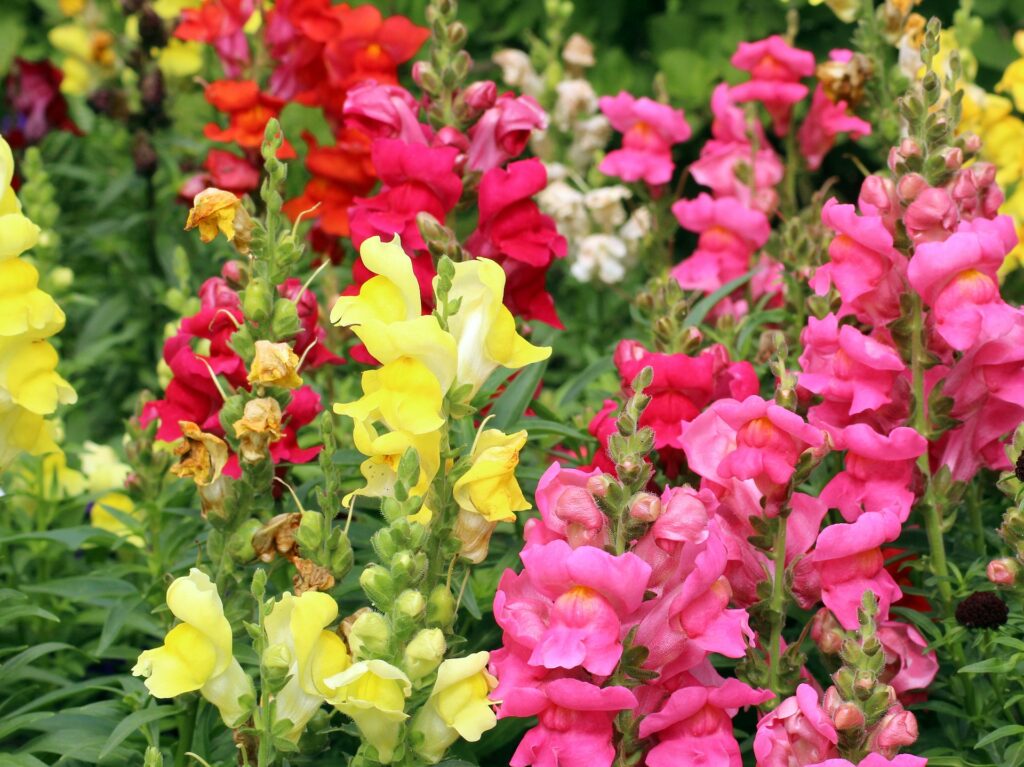
Angelonia, often referred to as summer snapdragon, features upright spikes of colorful flowers in shades of purple, pink, white, and blue. This versatile annual loves the heat and thrives in full sun and well-drained soil, making it perfect for summer gardens.
Plant angelonia in June for a spectacular display that lasts until the first frost. They are low-maintenance and resistant to heat and drought, making them an excellent choice for hotter climates. Use them in borders or containers to add height and interest to your planting scheme.
Gomphrena (Gomphrena globosa)
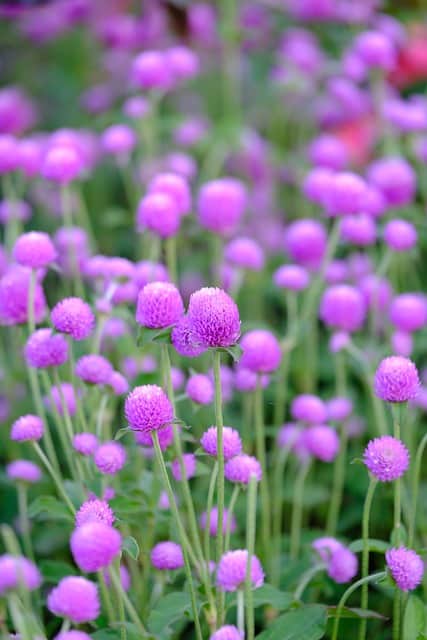
Gomphrena, also known as globe amaranth, is a charming annual flower that offers long-lasting color. Its round, pom-pom-shaped blooms are available in various shades, including pink, purple, and white. Gomphrena thrives in full sun and well-drained soil, making it a superb choice for sunny spots in your garden.
Plant gomphrena in June to ensure a vibrant summer display. These flowers are drought-tolerant and do not require much maintenance, making them perfect for busy gardeners. Plus, their flowers dry well, making them ideal for bouquets and arrangements.
Canna (Canna spp.)
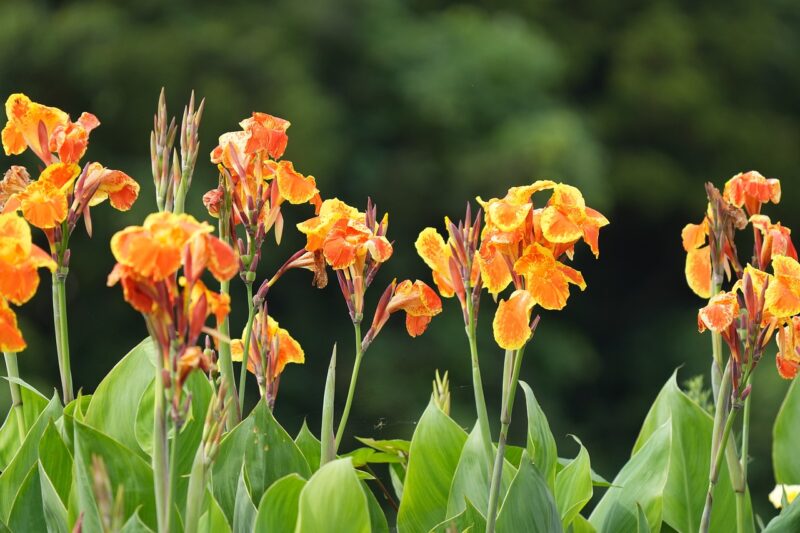
Cannas are dramatic, tropical-looking plants that can transform your garden with their large leaves and vibrant flowers. With various colors ranging from red to orange and yellows, cannas thrive in full sun and rich, moisture-retentive soil, making them perfect for garden borders and ponds.
June is an ideal month for planting canna bulbs or rhizomes as the weather warms up. These plants prefer regular watering to ensure robust growth throughout the summer. Besides their ornamental value, cannas can also help attract butterflies, enhancing the allure of your garden.
Balloon Flower (Platycodon grandiflorus)
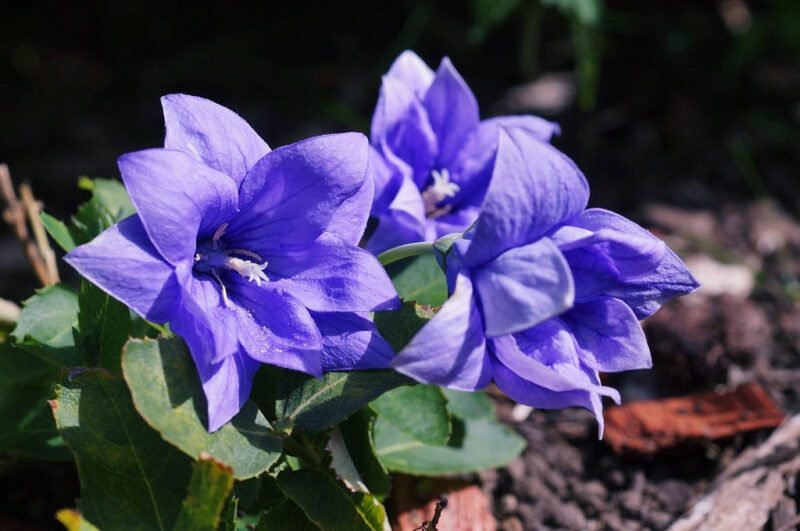
Balloon flowers are renowned for their unique balloon-like buds that open into star-shaped blossoms. This perennial plant thrives in well-drained soil and full sun to partial shade, making it versatile for various garden settings. Balloon flowers are relatively low-maintenance, making them suitable for novice gardeners.
Plant in June to watch your garden come alive with these interesting blooms throughout the summer. They are excellent for cottage gardens or border plantings, presenting an appealing contrast to other flowering plants in your landscape.
Helenium (Helenium autumnale)
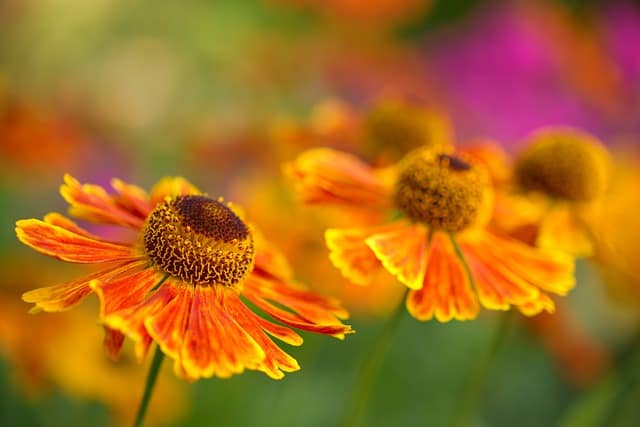
Helenium, or sneezeweed, is a lovely perennial that produces daisy-like flowers in warm tones, making it an excellent choice for late summer color. These flowers thrive in full sun and well-drained soil, providing a vibrant backdrop in garden beds and borders.
Plant helenium in June to ensure a blooming display from mid to late summer. They appreciate consistent moisture, so watering during dry spells is essential for healthy growth. Additionally, helenium attracts butterflies and other beneficial pollinators, making it a worthy addition to any flower garden.
Impatiens (Impatiens walleriana)
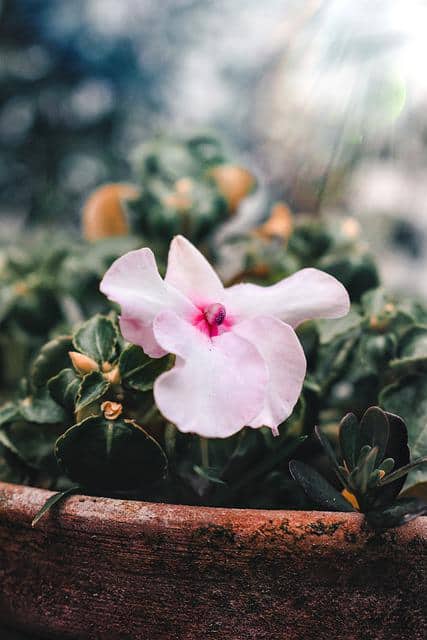
If you’re looking for an option for shady spots, impatiens are a popular choice that thrives in low-light conditions. These annuals come in a wide range of colors and bloom continuously throughout the summer, making them a delightful addition to containers and garden beds.
Plant them in June, ensuring they have well-draining soil and ample watering to keep them looking vibrant. Impatiens can easily fill in gaps in your gardens, providing cheerful color where other plants may struggle. They make perfect companions for tall perennials, filling out lower spaces beautifully.
Sedum (Sedum spp.)
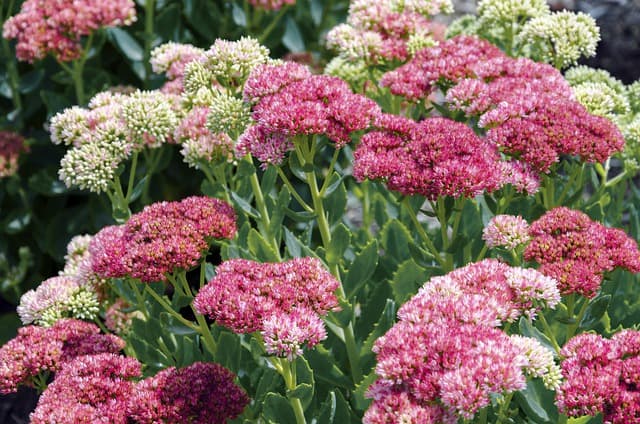
Sedum, or stonecrop, is a low-maintenance perennial that thrives in dry, well-drained soil and full sun. This succulent is perfect for rock gardens and borders, offering interesting textures and forms alongside its bright flowers in hues of yellow, pink, and red.
When planted in June, sedum will establish itself quickly and produce clusters of flowers later in the summer. Their ability to withstand drought makes them ideal for water-wise gardens. Sedum not only provides beauty but also lessons in resilience and adaptability.
Globe Thistle (Echinops ritro)

Globe thistle is a unique perennial known for its spherical blue flowers that resemble delightful blue thistles. This drought-tolerant plant prefers full sun and well-drained soil, making it a great addition to sunny garden spots. It creates a stunning focal point and attracts bees and butterflies, enhancing your garden’s biodiversity.
Plant globe thistle in June for the best results, allowing them to thrive throughout the summer. They pair beautifully with other flowering plants, creating texture and visual interest in your garden.
Lilies (Lilium spp.)

Lilies are classic garden flowers that provide a bold splash of color and fragrance during the summer months. With countless varieties available, you can choose from large trumpet blooms to elegant Asiatic lilies, making them versatile for any garden design.
Planting lilies in June allows them to establish quickly and produce stunning flowers throughout the season. They thrive in well-drained soil and sunlight, though some varieties can tolerate partial shade. Regular watering will ensure they remain vigorous, and deadheading spent blooms will extend their flowering period.
Caladiums (Caladium bicolor)
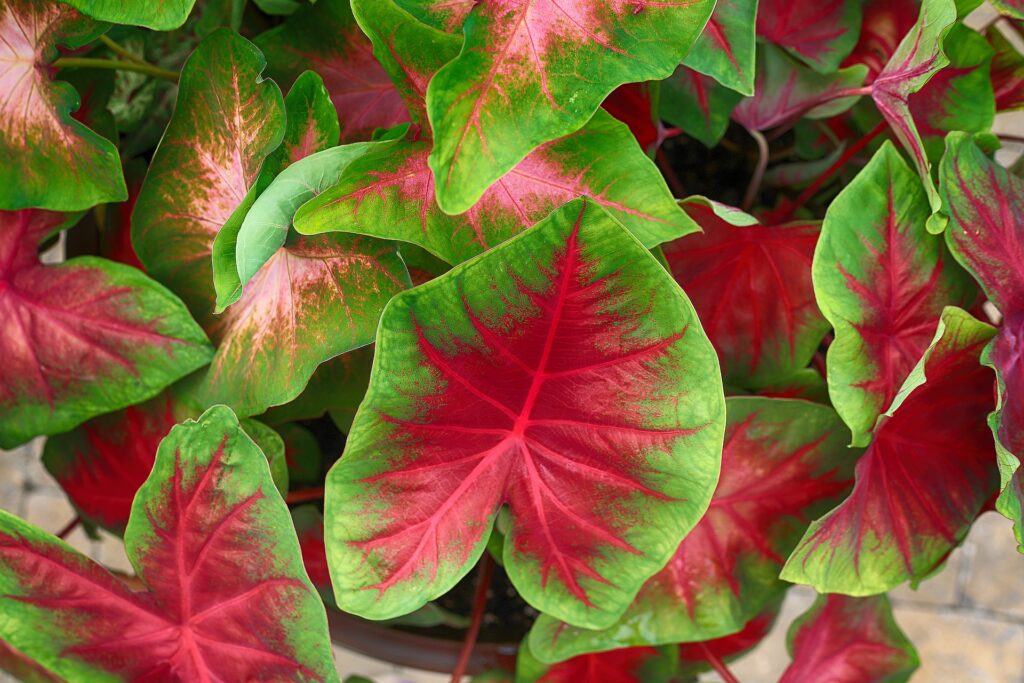
Caladiums are renowned for their stunning foliage, which comes in a variety of colors and patterns, from deep green to bright pink, white, and red. These tropical plants thrive in shade, making them ideal for adding drama to darker areas of your garden.
Plant caladium tubers in June in rich, well-drained soil. They appreciate consistent moisture, particularly during the hottest months. As a bonus, caladiums can create vibrant displays in containers, mixed borders, or shaded garden beds, making them a versatile choice for enhancing your garden.
Geraniums (Pelargonium spp.)
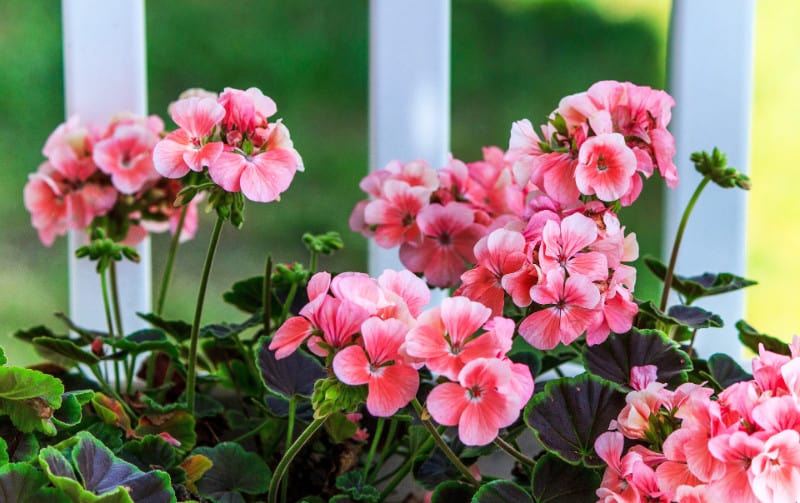
Geraniums are beloved summer annuals that provide bright bursts of color in garden beds and containers. They come in various hues, including pink, red, white, and purple. Geraniums enjoy full sun and well-drained soil, thriving throughout the summer months.
Plant geraniums in June for vibrant displays and regularly deadhead to encourage continued blooming. They are relatively low-maintenance and are excellent for adding color and beauty to patios, balconies, and gardens alike.
Torenia (Torenia fournieri)
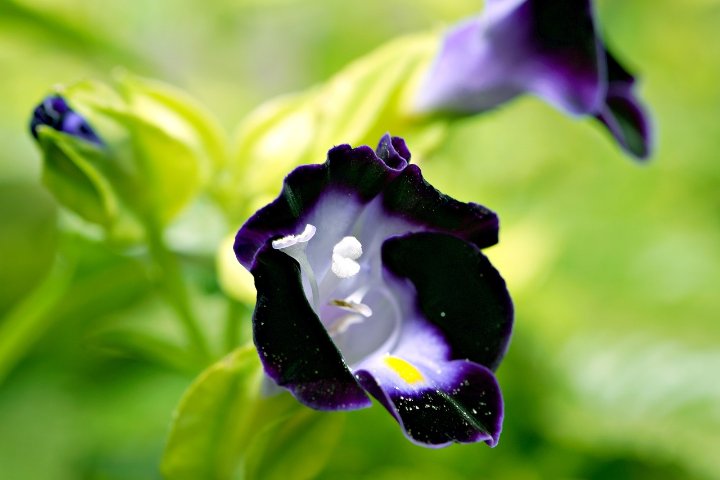
Torenia, popularly known as wishbone flower, offers charming, colorful blooms that can light up even the shadiest corners of your garden. This annual thrives in partial shade to full sun, making it perfect for containers or hanging baskets.
When planted in June, torenia will thrive in rich, well-drained soil and appreciate regular watering to keep their roots moist. Their ability to bloom continuously throughout the summer makes them an excellent choice for gardeners looking for long-lasting color.
Waterlilies (Nymphaea spp.)
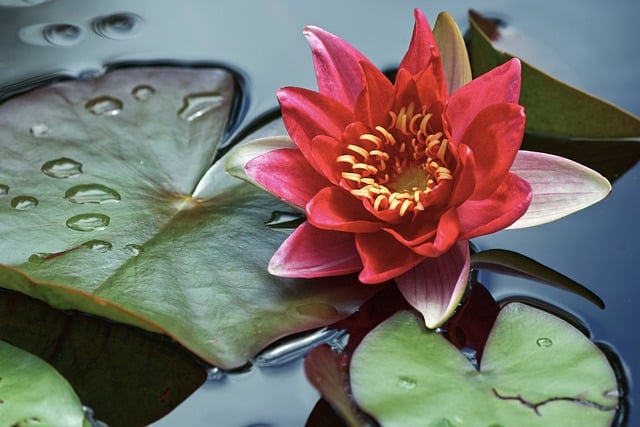
For those with aquatic gardens or ponds, waterlilies are a stunning choice to plant in June. Their large, floating leaves and fragrant blooms add elegance and beauty to any water feature. Waterlilies prefer full sun and should be planted in shallow water for optimal growth.
Select varieties according to your garden’s conditions and ensure they have enough space to spread and thrive. Waterlilies provide not only beauty but also habitat for fish and other wildlife, making them a beneficial choice for your aquatic garden.





